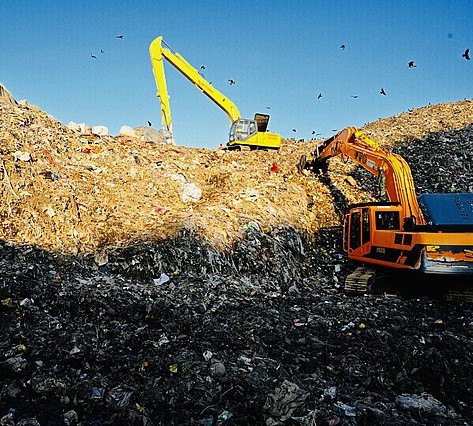
In recent decades, the fashion industry has had significant changes, fueling the rise of fast fashion. While this business model has made fashion more accessible and affordable to consumers, it has also led to significant environmental consequences, particularly in the form of textile waste.
Fast fashion end-up in landfills or incinerators, where synthetic fibers like polyester can take over 200 years to decompose, leaching harmful microplastics into the environment.
The fashion industry is a major water consumer. Producing a single cotton shirt can require over 2,700 liters of water—the equivalent of what one person drinks in 2.5 years. Dyeing and treating textiles also introduce toxic chemicals into waterways, especially in countries with lax environmental regulations.
Rivers in some textile-producing regions of Asia have been found to contain high levels of lead, mercury, and arsenic—all byproducts of garment production. These pollutants not only devastate aquatic ecosystems but also threaten the health of local communities.
The reliance on fossil fuel-based fibers like polyester and the globalized supply chain—where clothes are designed in one country, produced in another, and sold around the world—add to this carbon load.
The carbon cost doesn’t end with production. Returns and discarded clothes often travel thousands of miles to landfills or resale markets, increasing the overall footprint of each item.
Fast fashion’s environmental impact is closely linked with ethical concerns. To maintain low prices, brands often outsource labor to factories in developing countries where wages are low and environmental safeguards are weak. This results in the depletion of local resources, overuse of water, and poor working conditions—all in the name of affordable style.
What Can We Do?
While the problem is systemic, individual choices do matter. Here are some ways to reduce your fashion footprint:
- Buy less, choose well: Invest in quality pieces that last longer.
- Shop secondhand: Thrift stores, vintage shops, and online resale platforms are great alternatives.
- Support sustainable brands: Look for companies that prioritize transparency, fair labor practices, and eco-friendly materials.
- Care for your clothes: Wash less frequently, avoid the dryer, and repair items when possible.
Fast fashion has short term gains and it’s hard on the planet. As awareness grows, so does the potential for change. By rethinking our shopping habits and demanding more from brands, we can begin to stitch together a more sustainable future for fashion.

More Stories
Living Green: 4 Simple Everyday Habits for a Sustainable Future
Photo: Zero Waste Tea If you want practical tips on how to contribute to green living in your daily life,...
A Closer Look At What Litter Really Does To The Environment
Photo: Thayne Tuason Littering is a pervasive issue that affects communities, wildlife, and natural ecosystems around the globe. It is...
Addressing Biodiversity Loss: Strategies and Eco-Responses
Photo: Pit and Mount Microtopography Biodiversity loss has far-reaching challenges on economies, and human well-being. Similarly, pollution, overexploitation of natural...
Sustainable Dining: A Path to Eco-Friendly Eating by Tackling Food Waste
Photo: Michael Gabler Today more than ever, being environmentally conscious is a part of our daily lifestyle and one of...


